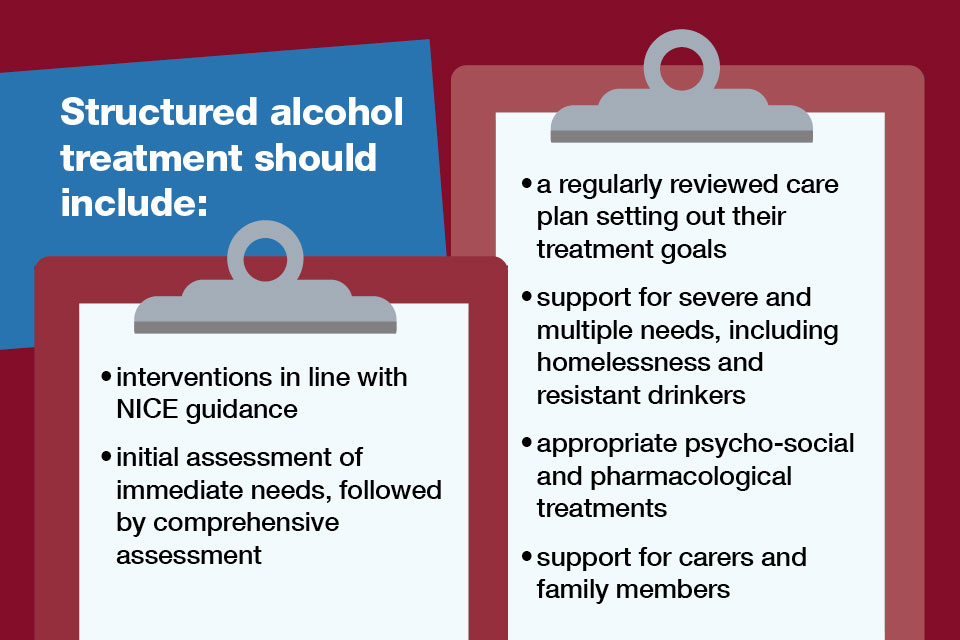
PHE has published our annual alcohol and drug treatment statistics for 2016-17. These are based on data collected by the National Drug Treatment Monitoring System (NDTMS) from alcohol and drug services across England.
The full report contains a wide range of treatment data, but this blog focuses on some of the more significant findings. Overall, the statistics show a mixed picture; waiting times remain low (the majority of people waiting three weeks or less to start treatment) while overall numbers in treatment continue to fall.
Treatment numbers are down, particularly for alcohol
In 2016, nearly 280,000 people received treatment for alcohol and drugs, a decrease of 3% and the largest drop seen over the last six years.
This decrease over the last 12 months is largely due to the reduction in people starting treatment for alcohol problems only (down 5%, from 85,035 to 80,454). The numbers of people getting treatment for alcohol has fallen by 12% from a peak of 91,651 in 2013-14.
We recently published figures estimating the number of adults—over 595,000—with alcohol dependency and potentially in need of specialist treatment. The estimate shows that four out of five adults dependent on alcohol are not getting into treatment; there is work to be done to address what is behind this fall in alcohol treatment numbers over the last three years.

Numbers of people in treatment for crack are going up
The data also shows a 20% increase in the number of people entering treatment for crack, and a 12% rise in people being treated for crack and opiate problems. This reflects the 10% rise in use seen in England, reported in our recent opiate and crack use estimates and shows local services are responding well to emerging patterns of drug use and an increasing demand for treatment.
The exact reason for the increase in prevalence is not clear but likely to be driven in part by the affordability and purity of crack and cocaine, and suggests changes in dealing patterns and drug supply networks, such as the ‘county lines’ phenomenon, are also playing a role.
Deaths in treatment have slowed
It’s also encouraging to see that the large rises in the number and proportion of opiate deaths over the last few years have slowed – including the number of deaths of those in treatment. However, opiate deaths are still at their highest ever level and the highest proportion of these deaths continue to be amongst those not in treatment. hat’s important to remember is that we know treatment is a significant protective factor and without it deaths are likely to be higher still.
For alcohol, deaths among people in treatment reduced in 2016, down 7% from the previous year.
New psychoactive substance treatment numbers have fallen
Although the overall numbers of people accessing treatment for new psychoactive substances (NPS) have always been relatively small compared to other drugs, the numbers had consistently increased since the reporting of NPS in treatment began in 2013-14. However, the latest figures show a significant change with the numbers of people accessing treatment for NPS and other club drugs falling – by 29% in the last year
These falling numbers were largest in young adults aged under-25 (a 51% reduction), but of concern is that NPS use was very high among people accessing treatment who had no fixed address or had housing problems – highlighting a significant problem amongst the most vulnerable drug users that demands joined up working between treatment and homelessness services.
How we’re supporting local areas
To accompany these figures, we will soon publish local data on treatment trends so local authorities can track trends for different drugs in their local area. We have also recently updated and developed a number of tools to support local areas:
- The commissioning support pack is a suite of documents and tools to support local commissioners in addressing drug and alcohol issues effectively.
- An improved Cost Calculator and cost-effectiveness analysis (CEA) to support local areas to estimate their spend on treatment interventions and cost-effectiveness.
- A new social return on investment (SROI) tool, which helps local authorities to demonstrate the social and economic benefits of investing in alcohol and drug prevention, treatment and recovery interventions.
This suite of tools provides commissioners with comprehensive support to help understand their drug using population and the return on investment to be leveraged from effective joined up treatment.
The takeaway messages from today’s data are that the increases in crack users needing and seeking help show how vital it is for a treatment system able to reach out and respond to increased demand and changing problems. And nowhere can be complacent about the falling alcohol figures as these are unlikely to be a reflection of need.
Questions need to be asked about whether local alcohol dependent populations are being identified, offered and supported into treatment. PHE will be keen to assist local areas to reflect on what can be done to address a clear unmet need.
Read our recent blog on how alcohol and drug treatment helps reduce crime.

1 comment
Comment by CB posted on
Not a comment, a correction:
Deaths in treatment have slowed
Third sentence: You're missing a W:
. hat’s important to remember is that we know treatment is a significant protective factor and without it deaths are likely to be higher still.